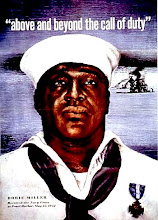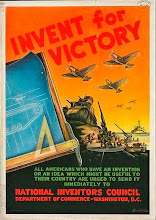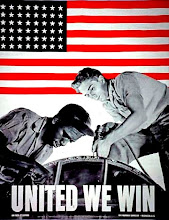It sure was good news to see The Wall Street Journal announce that America had launched a brand new battleship. The ship is named for a Marine hero who gave his life while saving others. To be fair, the Journal is merely passing along a wire piece from the Associated Press. Problem is, America decommissioned all its battleships years ago, if fact, all battleships were removed from the Naval Registry in 2006.
Here's the article:
While Old Media is bemoaning its fate in the Internet age, someone ought to consider old habits, like fact checking. The article mentions "battleship" twice while also describing the ship as a destroyer. That's like confusing a Mustang with a stretch limo. Poor Old Media, just can't get it right.
The
USS Jason Dunham is America's newest
destroyer, named for a Marine Corporal who won the Medal of Honor. The
Jason Dunham is the 59th
Arleigh Burke-class destroyer. The first
Arleigh Burke-class destroyer, named the
USS Arleigh Burke, was launched July 4, 1991.
As you can see from these pictures, it's fairly difficult to confuse a destroyer with a battleship. The Associated Press really, really wanted get it wrong, and they admirably succeeded. The Wall Street Journal shares blame, for trafficking such gross inaccuracy.
Old Media's problem isn't just its appalling lack of accuracy. Old Media peddles false equivalency in place of genuine comparison. The former appeals to intellectual lightweights while the latter is hard work. But perhaps Old Media's biggest failing is that it doesn't publish terribly interesting stories. Years of downsizing has led Old Media to ignore most stories that have nothing to do with abduction, murder or political echo chambers.
Case in point, who was Arleigh Burke, and why does America need another warship?
Arleigh Burke was a naval officer who served in WW2, Korea and during the Cold War. His 38-year career originated with destroyers. He was known for pushing his ships to the limit of their endurance and won several combat awards. He rose up the ranks to become Chief of Naval Operations in 1955. Admiral Burke lived to see the first launch of a
class of warships bearing his name. He died in 1996, at the age of 94. His epitaph simply reads:
Sailor. You should recognize at least three faces in the 1961 photo (below), which shows Admiral Burke in the back of the room.
Just a little digging reveals that
Arleigh Burke-class destroyers will become, for all intents and purposes, America's destroyer fleet. Very few of the advanced
Zumwalt-class destroyers are planned and the first two won't be delivered until 2015. The last
Spruance-class destroyer was decommissioned in 2005.
Arleigh Burke-class destroyers will also replace older
Charles F. Adams and
Farragut class guided missile destroyers, according to the Navy.
American citizens have paid for 59
Arleigh Burke-class destroyers over the past 20 years. What have we purchased? In part, necessary technology upgrades. The Navy says that
Arleigh Burke-class destroyers develop 100,000 horsepower, with speed exceeding 30 knots. Considering that Admiral Burke hit 34 knots in WW2-era destroyers, if safe to assume that, for obvious reasons, the Navy's official speed rating is a bit understated.
We also purchased lower operating costs in ships that can attack all manner of targets and defend themselves against all manner of threats.
Arleigh Burke-class destroyers are the first U.S. warships with an air-filtration system that defends against nuclear, biological and chemical warfare. Their biggest value is the
Aegis Combat System, an integrated target acquisition and defense system that can attack in-bound ballistic missiles. This means that
Arleigh Burke-class destroyers play a crucial role defending countries like Israel, from countries like Iran. They are a vital asset, helping keep the lid on WW3. They may actively prevent such war from occurring.
Production of the
Arleigh Burke-class will be expanded to offset reductions in planned
Zumwalt-class ships. America now defends the free world in a cost-effective manner, with destroyers that can shoot down nuclear missiles.
This post is an example of the care and effort Old Media has abandoned for cheap sensationalism. A few web searches, a little data synthesis and a modicum of writing produce something more interesting and relevant than an erroneous wire piece. A junior reporter could have produced something better - with a few quotes from Naval officials, military technology experts, etc., - in no more than 1-2 hours.
Is Old Media's problem really digital technology, or are well-informed readers simply tired of being insulted?

















+breed+danger+6x8.jpg)











+5x7.jpg)

